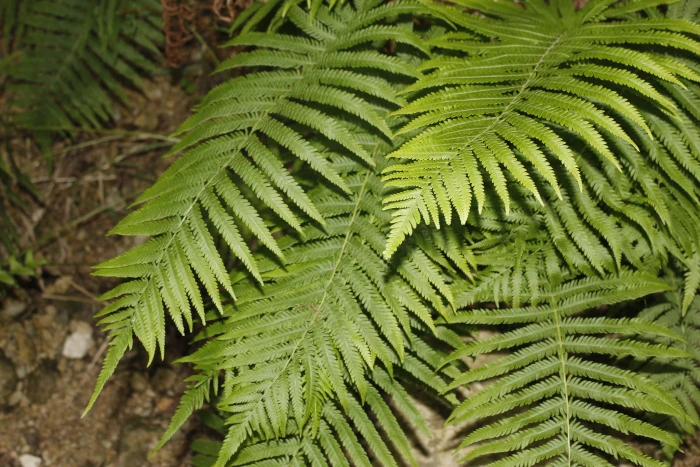Ovate Marsh Fern
(Pelazoneuron ovatum)
Ovate Marsh Fern (Pelazoneuron ovatum)
/
/

Alex Karasoulos
CC BY 4.0
Image By:
Alex Karasoulos
Recorded By:
Copyright:
CC BY 4.0
Copyright Notice:
Photo by: Alex Karasoulos | License Type: CC BY 4.0 | License URL: http://creativecommons.org/licenses/by/4.0/ | Rights Holder: Alex Karasoulos | Publisher: iNaturalist | Date Created: 2024-04-16T18:44:34-07:00 |























Estimated Native Range
Climate Requirements for Fridley, Minnesota
| This Plant | Your Site | Plant Suitability for Your Location | ||
|---|---|---|---|---|
| • Precipitation | 18" - 145" | 30" | Your precipitation may be insufficient for this plant. Irrigate N" / year. | Irrigate N" / year |
| • High Temp. | 72°F - 98°F | 85°F | Your summer temperatures are normal for this plant. | Excellent |
| • Low Temp. | 29°F - 66°F | 3°F | Your winter temperatures may be too cold for this plant | Too cold |
This plant should grow well at your location with about N inches per year (Y minutes per month) of irrigation.
Summary
Pelazoneuron ovatum, synonym Thelypteris ovata, commonly known as Ovate Marsh Fern or Ovate Maiden Fern, is a perennial fern native to wetland margins, swamps, and moist forests in the southeastern United States, particularly in Georgia’s Coastal Plain, as well as extending into the Carolinas and Florida. It typically grows up to 1.8 feet tall and features broadly ovate, pinnatifid fronds that are medium green in color. The fern prefers shaded to partly shaded conditions and is often found in the understory of forests, where it contributes to the local ecology by providing habitat for various invertebrates and serving as a food source for some wildlife species.
Ovate Marsh Fern is valued for its lush, green foliage and its ability to thrive in wet, shady garden spots where other plants might struggle. It is commonly used in shaded garden beds, woodland gardens, and naturalized areas. This fern is relatively low maintenance, requiring consistently moist soil and protection from strong winds. It is not known for significant pest or disease problems, but it can be sensitive to drought and excessive sunlight. In cultivation, it is important to mimic its natural moist, shaded habitat to ensure its success.CC BY-SA 4.0
Ovate Marsh Fern is valued for its lush, green foliage and its ability to thrive in wet, shady garden spots where other plants might struggle. It is commonly used in shaded garden beds, woodland gardens, and naturalized areas. This fern is relatively low maintenance, requiring consistently moist soil and protection from strong winds. It is not known for significant pest or disease problems, but it can be sensitive to drought and excessive sunlight. In cultivation, it is important to mimic its natural moist, shaded habitat to ensure its success.CC BY-SA 4.0
Plant Description
- Plant Type: Fern
- Height: 3-6 feet
- Width: 3-6 feet
- Growth Rate: Moderate
- Flower Color: N/A
- Flowering Season: Non-Flowering
- Leaf Retention: Evergreen
Growth Requirements
- Sun: Part Shade, Full Shade
- Water: High
- Drainage: Medium
Common Uses
Border Plant, Deer Resistant, Low Maintenance
Natural Habitat
Native to wetland margins, swamps, and moist forests in the southeastern United States, including Georgia’s Coastal Plain, the Carolinas, and Florida
Other Names
Common Names: Sword Fern, Pacific Sword Fern, Western Sword Fern
Scientific Names: Pelazoneuron ovatum, Christella ovata, Cyclosorus ovatus, Dryopteris normalis var. harperi, Dryopteris ovata, Dryopteris ovata var. harperi, Thelypteris augescens var. lindheimeri, Thelypteris normalis var. harperi, Thelypteris ovata
GBIF Accepted Name: Pelazoneuron ovatum